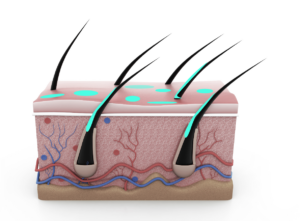Adult & Child Drug Testing Lab
Hair Drug Testing
Hair testing has come to be seen as a powerful tool for the detection of drug and alcohol use. Hair provides a long-term history of alcohol and other drugs by trapping biomarkers in the fibers of the growing hair strand. When collected close to the scalp, hair can provide up to approximately a 3-month detection window for alcohol and other drugs. Hair is simple to collect, somewhat difficult to adulterate, and easy to ship.

A 1.5-inch sample of about 200 strands of hair (about the size of a #2 pencil) closest to the scalp will give 100mg of hair, the ideal sample for screening and confirmation. For EtG, add-ons, and/or tests above 10 panels, 150mg of the specimen is recommended. We recommend weighing the specimen on a jeweler’s scale. If scalp hair is unavailable, an equal amount of body hair may be collected. When referring to head hair, we are referring to scalp hair only. Body hair refers to all other hair types (facial, axillary, etc.).
Collection Resources
D/L Methamphetamine Isomer Testing
D/L Methamphetamine Isomer Testing is available upon request for specimens that test positive for methamphetamine. If you are interested in lower-panel options, please reach out to us here!
Drug Panels
For a printable PDF click here.
- 20 Panel
- 13 Panel
- 5 Panel
*Click the green and white plus sign beside each drug class to view the substances within each class.
Add-Ons Available
Collection
Client Services
By Phone: 1.800.235.2367
Business Hours (CST)
Monday 7am-7pm
Tuesday 7am-7pm
Wednesday 7am-7pm
Thursday 7am-7pm
Friday 7am-7pm
Saturday 8am-5pm
Testing Details
Panel Name: Hair Testing
Panel Description: Hair Testing Drug Panel
Type: Profile
Matrix: Hair
Collection Container: Foil in a tamper-evident sealed envelope
Specimen Requirements: For all tests below a 10-panel, specimen volume should be at least 100mg of specimen. This is equal to a bundle of hair that is 1.5 inches in length and about ¼ inch in diameter, the diameter of a #2 pencil. For EtG, add-ons, and/or any tests 10-panel and above, at least 150mg of specimen should be submitted. We recommend weighing the specimen on a gem scale.
Storage Conditions: Specimens should be stored in a dry, dark area at room temperature and may be shipped at ambient temperature.
Transport Conditions: Ambient
Method: Initial screen and confirmation
Turnaround Time: Generally, the standard turnaround time for reporting negative screening test results is the next business day, with an additional 1-2 business days for specimens that require confirmatory testing. Turnaround time begins from receipt of the valid specimen –accompanied by a properly documented valid order– into the laboratory. Some tests require additional time to process and will fall outside the standard turnaround time window.
- References
- Articles
- FAQs
- White Papers
Quantity Not Sufficient 11-Nov-2016
The Long Game 02-Feb-2015
The Stability of Drugs in Hair 01-Oct-2012
Psilocin: An Annotated Bibliography 25-Jun-2025
Contact USDTL
1.800.235.2367
Client Services
Business Hours (CT)
Mon.-Fri. 7am-6pm
Sat. 8am-5pm
Holidays Closure
New Year's Day
Memorial Day
Independence Day
Labor Day
Thanksgiving Day
Christmas Day
Request Your Collection Supplies
For your convenience, USDTL provides test collection supplies at no additional charge.
Newsletters, Posters, and Catalogs
Our print materials will keep you up to date on the latest news in drug and alcohol testing.



